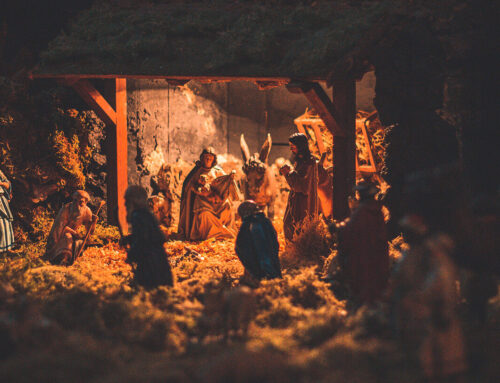Did you know that lamenting is a spiritual practice? It is incredibly relevant for Easter, especially Holy Week, when our time of the crucifixion and resurrection is coming to a close. This Easter season I want to talk about lamentations. Why? Because to lament is probably one of the most revolutionary things we can do in life, and something we all need to desperately reclaim for our well-being, for our sense of wholeness and belonging. I believe it is imperative for the future of all life.
There is life-giving wisdom deeply embedded in Lent that has gone missing for centuries. The spiritual practice of lamenting is one of these lost experiences. Let’s face it though, the word “lament” sounds pretty archaic.
How often do you hear about “lamentations” in the media? Use it in conversation? See it in the books you are reading? Probably never. I know I rarely hear it. The Book of Lamentations is five poems full of sorrow and outrage and pain. The emotions expressed in these poems ring true today, especially for things that are out of our control and reach, like death, jobs ending, illness and relationship losses.
It is indeed a strange word – lamentations – and even stranger is the idea of lamenting as a spiritual practice. I think it’s because when we hear the word “lamentations,” images and sounds of wailing, overly dramatic weeping, gnashing of the teeth, guttural shrieks and oscar-winning performances of primal expressions of carrying-on flood our senses.
To lament is to mourn or grieve out loud. Weeping, wailing and gnashing of teeth are all signs of lamenting. Jesus used the practice in his teachings, and certainly the practice was well known in his middle eastern world. We often see lamenting taking place in other countries when we watch TV after horrific events. Many of us in the U.S. would say that they were just carrying on. Yet grief is a natural part of life, it happens to us all. Because of this, lamenting becomes a necessary step in our journey of healing, of moving through the anger, despair, frustration, grief and powerlessness.
The Bible is full of grieving, of lamenting. In the Hebrew Testament King David had a life full of loss. When his infant son was sick for a week, David lay on the floor wailing, grieving, refusing to eat or drink any water. He refused to get up. And when the baby did die that’s when David finally got up, washed himself off and went back to his life. In the Christian Testament, of course the disciples were devastated at the crucifixion of Jesus. What do you think Jesus’ mother was doing at the foot of the cross when he died?
Sometimes life happens so quickly and dramatically we lose our sense of how the world works, where God is, what keeps us safe and what had given our life meaning. Lamenting is one step toward rebuilding and redefining our reality. With the loss we are experiencing, our perception of ourselves and those around us is also lost. This is the crucifixion.
[/perfectpullquote]In the course of our lifetime we lose many people, places and things. Life gives us many opportunities for lamentation. So we might as well acknowledge it, feel it and most importantly – practice it. It is only in moving fully into the anger and pain, we begin to plead, asking why this happened, wondering if the experience has something to do with karma or punishment, and engage in primal “carrying on” that we can then take the next steps – moving into action, being awake and alive and engaging in life once again. This is the resurrection.
We are taught at an early age to pull things apart in order to understand them. We think if we can see all the parts, if we can understand them, then our pain will be lessened. Not so. In fact, the spiritual practice of lamenting is an invitation to STOP pulling things apart, stop trying to understand and rather allow the depth of pain and anger and whatever got broken open by our life experience, to emerge. Lamenting is a journey of letting things in rather than breaking things down. It becomes the bridge back to life.
Ask yourself each day, “When confronted by life, by the unexpected forces that rock my world, do I isolate, pulling things apart to try to make sense of it and to solve my pain? Or do I bridge, connecting to the experience and to life – listening to its wisdom?” Everyday I have the choice: to isolate, shut-down and close off, or be brave and bridge my small, troubled heart to the world, to the wonder and mystery of God, to life all around me? A bridge is a connector, an opening, a pathway to healing.
This Holy Week, practice being a bridge. For yourself – connect yourself to what lives at the heart of your grief, and lament… loudly, primally, organically, and with great vulnerability. For another – be a witness, be a living, breathing tool that is that pathway so that all life can join, so that all life may realize our sense of belonging to and with each other.
A bridge of lamentations is found deep in the heart, it is what awakens us, enlivens us, resurrects us, and keeps us on our journey of moving into action, of getting up off the floor as King David and Jesus’ mother did, once the lamenting has subsided. This is the work of Easter: to comfort each other each time we break, to midwife and hospice life as it is rearranged, to be the bridge to life over and over again, until we each have the energy to get off the floor, to be resurrected and reengage with life.






Thank you Rev. Kelly. Your words resonate with my own experience and offer great spiritual direction for engaging with grief.
Beautiful, Kelly. Happy lamenting to you and all of us.